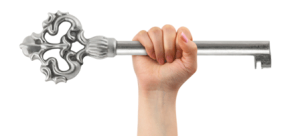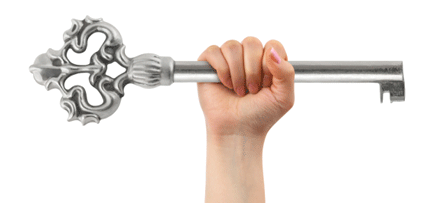
People often ask us what we think makes for a really good major gift program. Sometimes this question comes from their frustration with how things are currently going. Often it’s about wanting to make their program better.
We at Veritus Group believe there are seven key, indispensable categories of work that are required for any major gift program to be successful in raising significant dollars for program, retaining donors and providing meaningful and fulfilling work for major gift officers. Today we’ll talk about the first of these seven “keys” – and the rest are in our free White Paper, available here.
When we talk about what makes for a successful program, it’s important that we’re not just talking about “raising money.” We add “retaining donors” and “providing meaningful work for MGOs” to the goals for your program, creating a list that we call the Major Gift Value Triad – because all three of these are important parts of having a successful major gift program:
- Raising the money is important, as we all know.
- But retaining donors is equally important. We see most major gift files losing from 40-60% of their value from year to year, with millions of dollars simply vanishing into air; so keeping donors is a critical value to the major gift effort.
- And providing meaningful and fulfilling employment is also a critical value. If you are keeping the donors and raising the money but not valuing your MGO, there’s trouble ahead. The tenure of most MGOs lasts just over two years, so we can’t say we’ve learned much about stewarding this important human resource. And there’s a direct connection between losing your MGO and losing donors.
So with that said, let’s examine the first of these important Seven Keys.
Key #1: Attributes of the Ideal Major Gift Organization
It all starts with these three critical elements – an ability to raise money (a by-product of a non-profit that is doing good work and a donating public who supports it); a deeply held belief that donors are partners, not just sources of cash (with a strong desire to nurture and retain them); and a business environment and culture that honors its staff and provides them with meaningful and fulfilling work.
If you’re missing any of these points, don’t read any more. Just start working on getting this Major Gift Value Triad into your organization.
The next critical area that the ideal major gift organization has is a clear understanding of the difference between direct marketing, public relations, events and major gifts.
By “clear understanding” I mean that the leaders of the organization have organized work in a manner that recognizes that major gifts is not direct marketing, although at times it may use some DM strategies; is not public relations, although it will seek to preserve and promote the brand; is not events, although at times it will use an event (sparingly, please) to relate to caseload donors; but it is a one to one, very personal strategy where the sole objective is to match a donor’s interests and passions to the needs of the organization.
There are so many non-profits that do not have this right. Major gifts reports to the manager of direct marketing. Or public relations, events and major gifts are all lumped into one management structure. Or the events manager leads the major gift agenda. Crazy things like that. Just crazy. Why do managers/leaders do this?
All that can be concluded is that it’s ignorance – ignorance about what a major gift program is and how it works. Or there may be a bias towards some other marketing and communication program that keeps the major gift program “subordinate” to its agendas and objectives. Whatever it is, it’s pure foolishness – a recipe for disaster and failure. Major gifts should be an entity by itself, reporting directly to the Director/VP for Development – even if it’s a one-person department. It should not have PR, Events, Volunteer Management – any of those things – mixed in. It should be solely dedicated to managing, nurturing, upgrading and relating to major donors. Period.
Who makes up the major gift team? Professionals who relate to individual major donors; others who relate to foundations; gifted team members who handle corporations and businesses; and talent that handles other institutions like other non-profits, churches, synagogues, parishes, social service clubs, etc. All of these “types” of major gift sources have one thing in common: they require a one-to-one, personal approach. That is why we include them in the major gift “house.” Everything else belongs in another house – yes, a house on the same “development” street – but, assuredly, a different house.
Many times when we present this concept to management and leadership, a great deal of angst, debate and downright arguments ensue. It’s almost as though we’ve been promoting fundraising heresy and should be banned from the discipline. It’s only when we can show how millions of dollars are lost each year and hundreds, sometimes thousands, of donors are going away each year that our voice can be heard as one of reason and practicality. Our relationship to donors is a sacred trust. It is a mysterious and mystical thing. It is something to be valued and treasured. Believe this, and then take steps to align your organization so that it can properly and effectively house the ideal major gift program.
Read about the other Keys to a successful major gift program by requesting our free White Paper via our website.





Thank you!!!
I just participated in the Veritus MG webinar on May 25th and I’m looking for information on the 7-step donor engagement touch base strategy. Can you send please.
Dan
Thanks for participating in the live workshop last week, Dan! We can send you those slides – you should see an email shortly with the link.